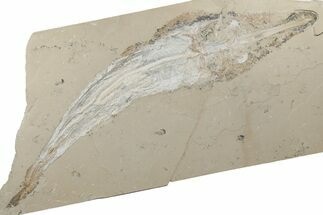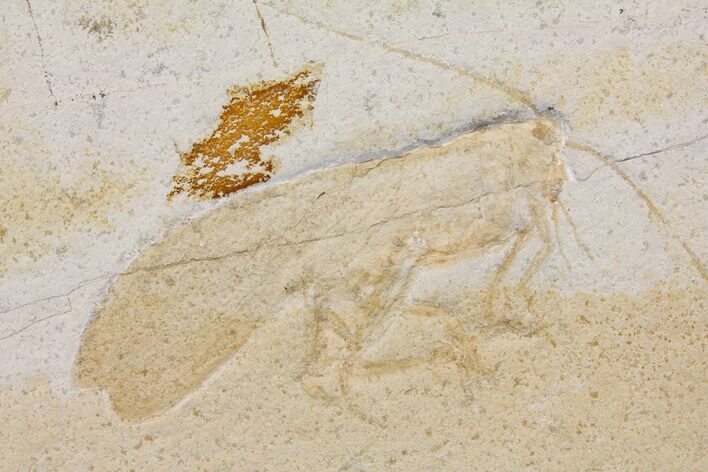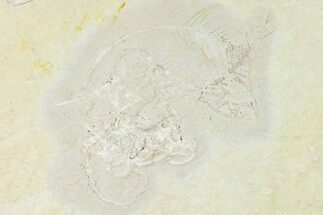This Specimen has been sold.
4.5" Giant Jurassic Locust (Pycnophlebia) Fossil - Solnhofen Limestone
This is a huge, 4.5" long fossil locust/grasshopper of the genus Pycnophlebia, collected from the Upper Jurassic Solnhofen Limestone of Germany. These locusts are a very rare component of the the Solnhofen fauna. It's very aesthetically displayed on a 15.2 x 9.7" slab of limestone.
There are multiple repaired cracks through the limestone where it broke during collection. One of these cracks runs through the body of this fossil, required gap fill and touchup restoration along the crack. The thin slab of rock that this fossil was found on has been backed with a thicker slab of limestone for structural purposes.
Upon request we can install a backing and french cleat style wall hanger at no additional charge. Otherwise this specimen will be accompanied by a metal/acrylic (gibson) display stand.
There are multiple repaired cracks through the limestone where it broke during collection. One of these cracks runs through the body of this fossil, required gap fill and touchup restoration along the crack. The thin slab of rock that this fossil was found on has been backed with a thicker slab of limestone for structural purposes.
Upon request we can install a backing and french cleat style wall hanger at no additional charge. Otherwise this specimen will be accompanied by a metal/acrylic (gibson) display stand.
The Solnhofen limestone is a famous Upper Jurassic lagerstätte in Germany. It is where one of the most famous fossils of all time, Archaeopteryx, was found. The fine-grained limestone makes excellent building material, which has led to heavy quarrying over the past two centuries. In the process, some spectacular fossils were unearthed, including fossil dragonflies, fish, pterosaurs, shrimp, horseshoe crabs, and many more.
This area represents an ancient archipelago at the edge of a sea. Due to high salt content, the lowest levels in the water column could not support much life and were largely devoid of oxygen. This lack of oxygen and scavengers on the bottom of the sea led to beautiful fossil preservation.
This area represents an ancient archipelago at the edge of a sea. Due to high salt content, the lowest levels in the water column could not support much life and were largely devoid of oxygen. This lack of oxygen and scavengers on the bottom of the sea led to beautiful fossil preservation.
SPECIES
Pycnophlebia sp.
LOCATION
Eichstatt, Bavaria, Germany
FORMATION
Solnhofen Limestone
SIZE
4.5" long (not including antennae) on 15.2 x 9.7" limestone
CATEGORY
ITEM
#167801
We guarantee the authenticity of all of our specimens.
 Reviews
Reviews











